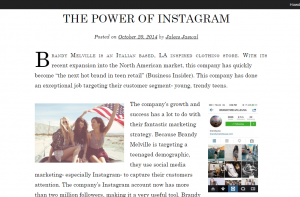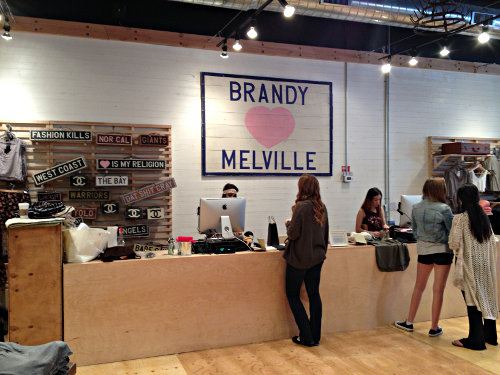A Response to “The Power of Instagram” (Peer)
In Jalees Jaswal’s “The Power of Instragram,” she describes how Brandy Melville, an “LA inspired clothing store” has gained popularity within a competitive clothing retail industry through its effective use of Instagram to appeal to its young female target segment. In my eyes, the company’s success demonstrates the “performance gap between companies that embrace technology and companies that resist it” that Erik Brynjolfsson mentioned in the article we read for our class readings. Although Brynjolfsson’s view is concerned with the internal operations of a business, I believe the same applies externally. Brandy Melville was able to recognize and capitalize on the way the social and technological trend of Instagram aligned with its “trendy clothing” value proposition.
While the company’s use of social media to differentiate itself is commendable, there are some ethical concerns which need to be addressed. The retailer only showcases skinny, Caucasian models on their website and Instagram (above image). Furthermore, Brandy Melville only offers a single size—small. I understand that this activity is legal and allows the company to focus on a niche customer segment, however, I believe that—in conjunction with their value proposition to deliver fashionable clothing—it sends the message that only white, small-sized females can be fashionable. Not only does this hurt their brand image among other women, according to Porter’s Five Forces it also restrains the business through an increase in buyer power created by a smaller number of consumers in their target market with lots of alternatives to choose from.
It is a shame that a company with such an innovative marketing strategy has elected to disregard corporate ethics in today’s world.
Check out Jalees’ entire blog!
Image Sources: (1) “Brandy Melville Reopens on N.Main St. in Downtown Walnut Creek” (2) Brandy Melville’s Instagram.







